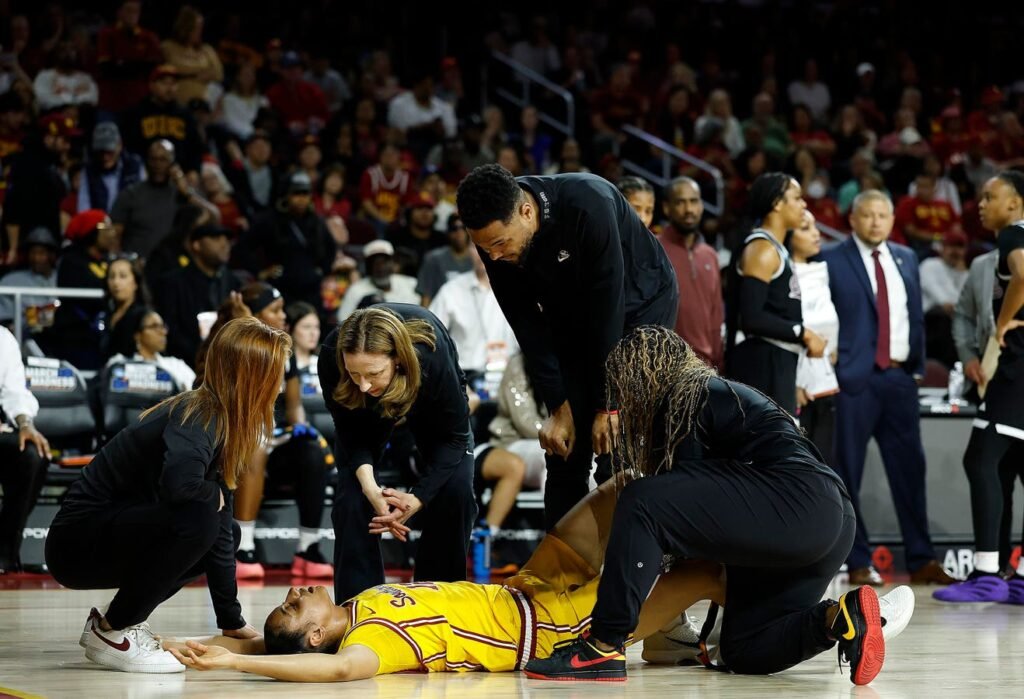JuJu Watkins #12 of the USC Trojans suffered a right anterior cruciate ligament tear against the … More
This was a setback in USC’s quest for the NCAA women’s basketball championship. Just five minutes into the Trojans’ 96-59 victory over Mississippi State in the second round of March Madness, their standout shooting guard JuJu Watkins sustained a right anterior cruciate ligament tear that will necessitate surgical reconstruction and months of rehabilitation before she can return to the court. Unfortunately, this injury is a common occurrence among female basketball players. A study published in 1999 revealed that female college basketball players were 3.5 times more likely than their male counterparts to experience ACL tears. There are theories surrounding the reasons for this discrepancy, but ACL injuries in female athletes have been under-researched compared to those in male athletes.
Impact of Watkins’ ACL Injury on USC’s Championship Hopes
During her first two years in college, Watkins scored 1,709 points, the second-highest total in history behind Ohio State’s Kelsey Mitchell. Her impressive season averages of 24.6 points, 7.0 rebounds, and 3.5 assists earned her Associated Press All-American honors and made her a top contender for national player of the year. These performances helped USC secure the fourth number one seed in the NCAA tournament after finishing the season with a 30-3 record. However, Watkins’ injury dealt a significant blow to the Trojans’ championship aspirations when her knee buckled during a drive to the basket.
The ACL plays a crucial role in knee stabilization. It is one of four ligaments in the knee joint, along with the posterior cruciate ligament, medial collateral ligament, and lateral collateral ligament. The ACL and PCL form a crucial X-shaped structure that helps maintain knee stability and prevent excessive movement.
Recovery Process for Watkins After ACL Tear
Through her first two collegiate seasons, JuJu Watkins had scored 1,709 points, the second most ever … More
Surgery is often necessary for complete ACL tears, especially for athletes engaged in sports that involve cutting, jumping, and pivoting. The surgeon may use tissue from the patient’s patella or hamstring tendons as a replacement ACL graft. Rehabilitation after surgery involves extensive physical therapy to rebuild muscle strength and joint stability, which can take up to six months before a return to sports activities is feasible.
Potential Factors Contributing to ACL Tears in Women
Research suggests that anatomical differences, muscle mass imbalances, hormonal factors, and jumping/pivoting styles may contribute to the higher incidence of ACL tears in female athletes compared to males. Women tend to have wider pelvises and lower muscle mass around their knees, which could affect knee joint stability. Hormones like estrogen and testosterone may also play a role in ligament laxity and muscle development.
Training methods and coaching styles may also influence jumping and pivoting techniques, potentially increasing the risk of ACL injuries in female athletes. Addressing these factors through targeted exercises, muscle strengthening, and training modifications could help reduce the likelihood of ACL tears in women.


